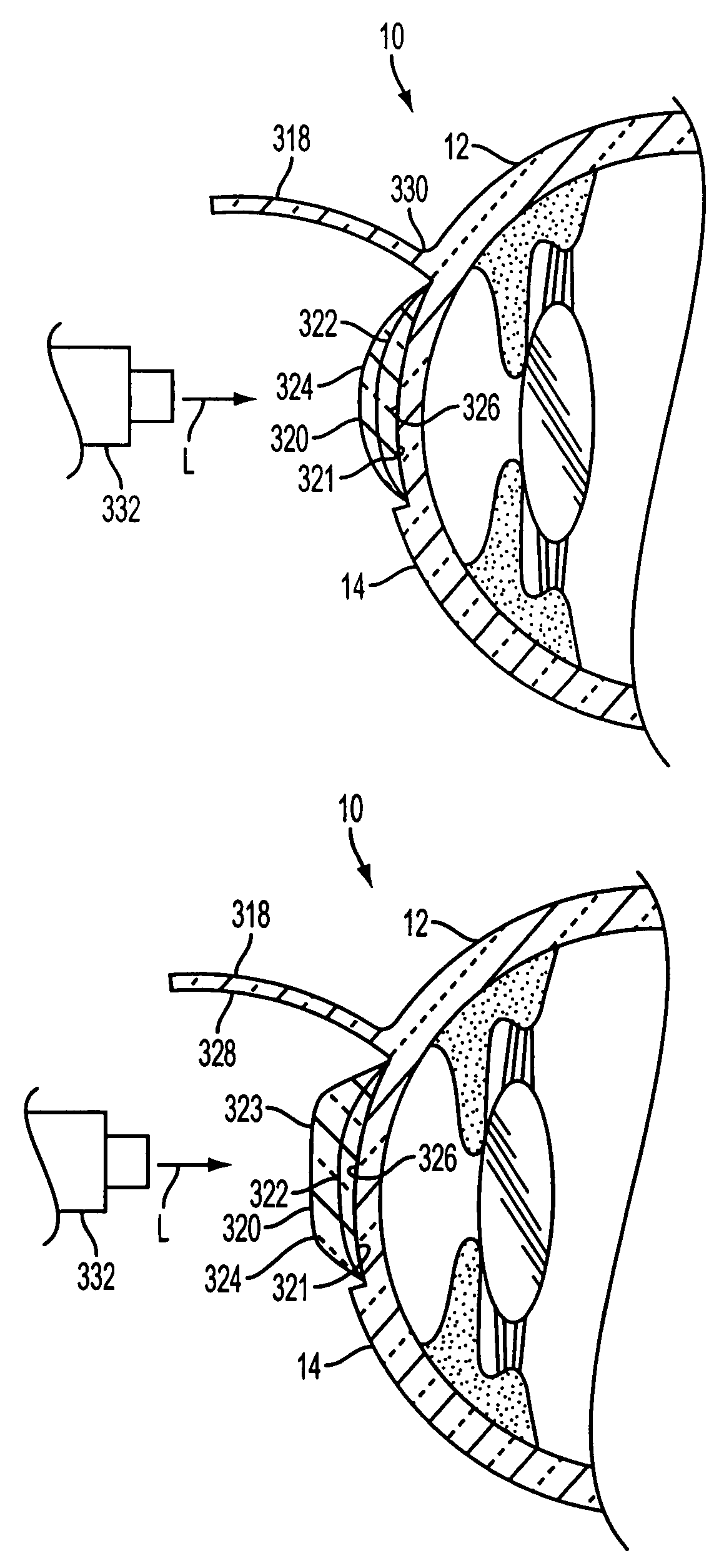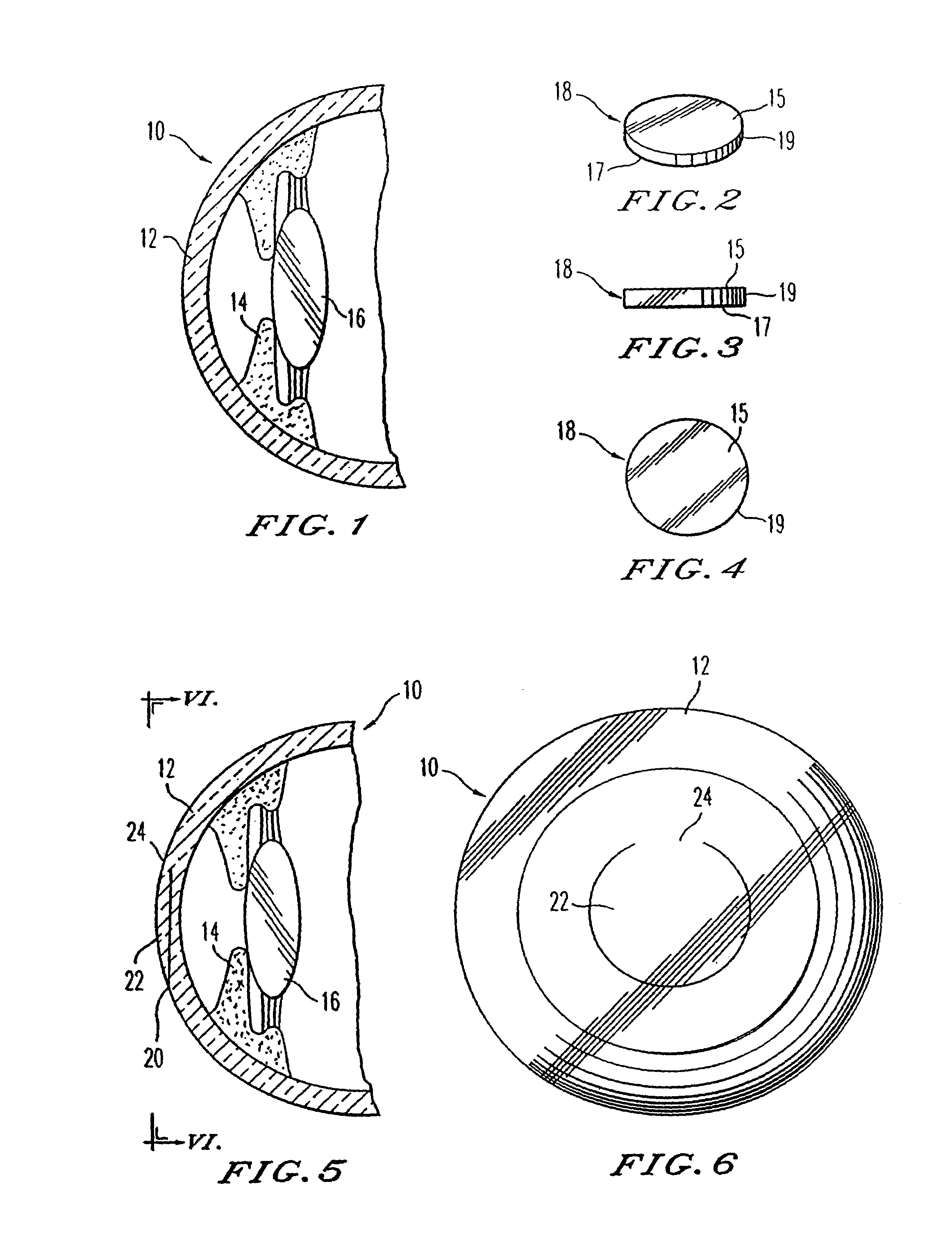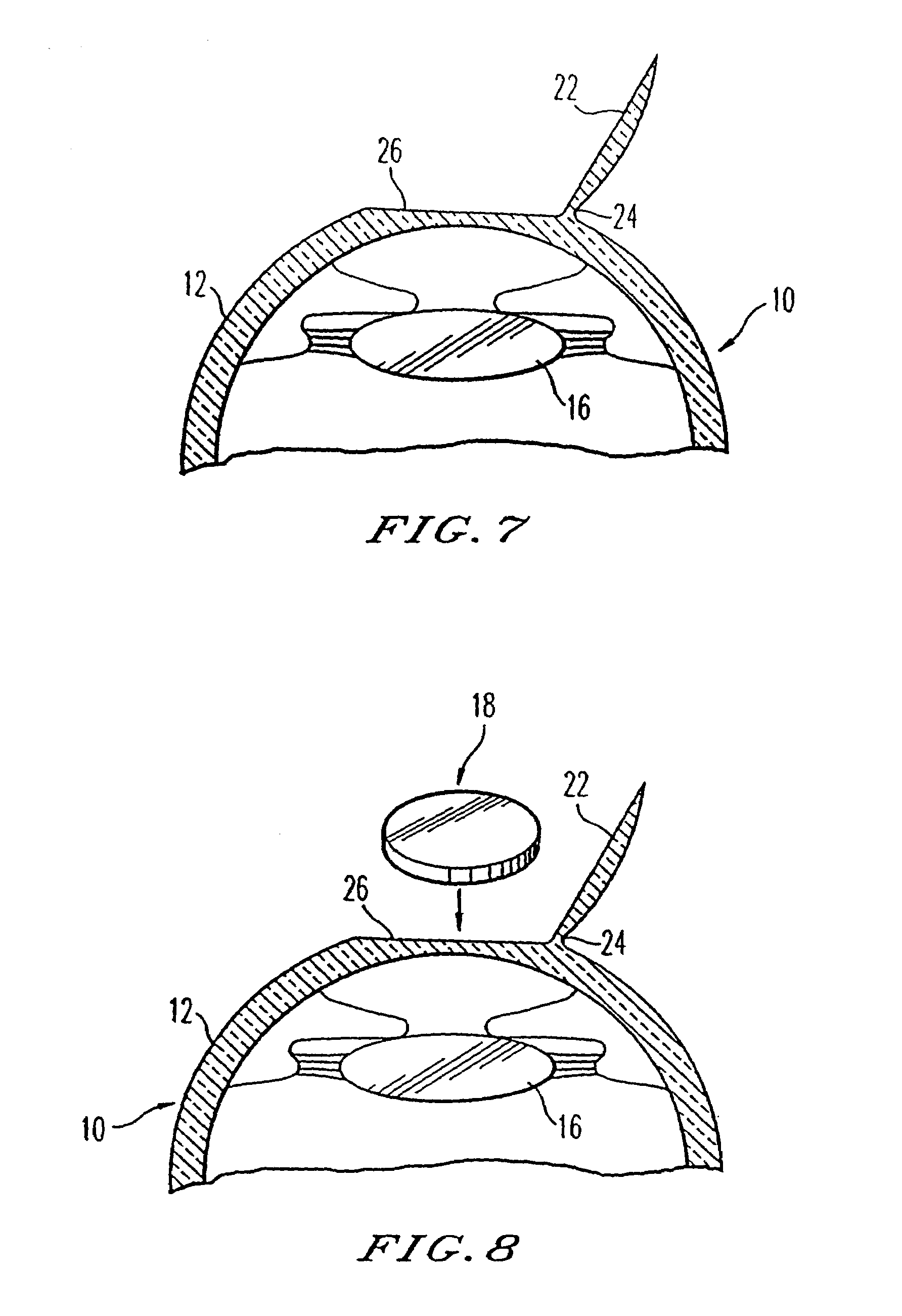Adjustable inlay with multizone polymerization
a polymerization and inlay technology, applied in the field of adjustable inlay, can solve the problems of ametropia, inability of the lens and cornea to correctly focus the far point, and inability of the astigmatic eye to sharply focus images on the retina
- Summary
- Abstract
- Description
- Claims
- Application Information
AI Technical Summary
Benefits of technology
Problems solved by technology
Method used
Image
Examples
Embodiment Construction
[0094]FIG. 1 is a side elevational view in section taken through the center of an eye 10 which includes a cornea 12, a pupil 14 and a lens 16. If the cornea 12 and lens 16 do not cooperatively focus light correctly on the retina (not shown) of the eye to thus provide adequate vision, the curvature of the cornea can be modified to correct the refractive power of the cornea and thus correct the manner in which the light is focused with respect to the retina.
[0095]A universal blank 18 according to an embodiment of the present invention is illustrated in FIGS. 2–4. As shown, the universal blank according to this embodiment is disk-shaped and has a uniform or substantially uniform thickness throughout, as illustrated specifically in FIG. 3. Specifically, the blank 18 has a first planar or substantially planar surface 15, a second planar or substantially planar surface 17, and a periphery 19. The surfaces 15 and 17 are arranged parallel or substantially parallel to each other with the per...
PUM
 Login to View More
Login to View More Abstract
Description
Claims
Application Information
 Login to View More
Login to View More - R&D
- Intellectual Property
- Life Sciences
- Materials
- Tech Scout
- Unparalleled Data Quality
- Higher Quality Content
- 60% Fewer Hallucinations
Browse by: Latest US Patents, China's latest patents, Technical Efficacy Thesaurus, Application Domain, Technology Topic, Popular Technical Reports.
© 2025 PatSnap. All rights reserved.Legal|Privacy policy|Modern Slavery Act Transparency Statement|Sitemap|About US| Contact US: help@patsnap.com



